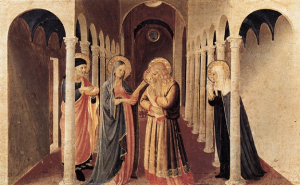
Fra Angelico, The Presentation of Christ in the Temple, circa 1450.
February 2nd may be known by most as Groundhog Day. However, on February 2nd Catholics celebrate an ancient feast known by several different names: The Presenation of the Lord, the Purification of the Blessed Virgin Mary, and Candlemas. The Old Testament and Gospel readings are the same regardless if one celebrates the feast in the TLM (traditional Latin Mass) or the Novus Ordo: Malachi 3: 1-4 and Luke 2:22-32. The feast, like most aspects of Catholicism, has deep Jewish roots. The Presentation of Jesus is not the circumcision of Jesus because the circumcision would have taken place 8 days after his birth, according to God’s law given to the Hebrews and recorded in Genesis 17.
Luke is the only Gospel writer to record the story of Jospeh, Mary, and Jesus traveling to the Temple in Jerusalem to present the baby Jesus 40 days after his birth. The Holy Family, devout Jews, followed the Law of Moses, and thus were performing the ritual sacrifice for Mary’s purification, following childbirth. According to Leviticus chapter 12, a woman who loses blood is rendered ritually impure. One who gives birth must undergo 40 days of ritual purification prior to being allowed to worship in the Temple. The reality is that neither Mary nor Jesus needed to offer any sacrifice of atonement, but in obedience and humility, they fulfilled their Jewish duty by the Presentation and Purification rites.
Part of the purification ritual for Mary, prescribed by Jewish law, was that she should sacrifice a lamb upon presenting herself and her child to the Temple priests. Levitical law indicates that if no funds were available to purchase a lamb for the sacrifice, two doves or pigeons may be offered. Luke tells us the Holy Family offered “a pair of doves or two young pigeons”; this is one bit of evidence that the Holy Family was poor.
Why is this feast so significant? This feast is an amazing moment in history where God returned to the Temple. In 587 BC, God left the Temple Solomon had built centuries before. He left the Temple just prior to the Babylonians burning it to the ground. The Incarnation took place in the Second Temple Period, when God was not dwelling in his temple. Yet, on this Feast of the Presentation, 40 days after his birth, Jesus who is fully man and fully God returned to the Temple. The prophet Simeon declares this, and the Old Testament reading from the prophet Malachi foreshadows it.
The Old Testament reading from Malachi, one of the minor prophets, describes the coming of the Lord himself to his Temple. The word used in the Hebrew is Yhwh, which is the word Hebrews used to refer to the sacred, unpronounceable name of God. Malachi prophesied that God himself would come again to the Temple in Jerusalem. Taken in context with Luke’s account of the Presentation we can see that we are celebrating the fulfillment of the prophecy of God himself returning to his Temple in Jerusalem.
Turning our attention to Simeon, Luke tells us he is a righteous man, waiting for the ‘consolation of Israel.’ This is a specific prophesy that points to Isaiah 40, wherein God speaks tenderly to Jerusalem of comfort and of good news. What good news? The Good News that God is coming to forgive his people’s sins and set them free! Simeon is waiting for God to come, and the Holy Spirit reveals this to Simeon, that he should not die until he sees the Messiah. Simeon says, “now allow me to depart in peace, for my eyes have seen your salvation….a light for revelation to the Gentiles and for the glory of thy people Israel” (Lk 2:31-32). We can see why the feast is also called Candlemas, because Jesus is a light unto the nations.
Blessed Candlemas to all, and don’t forget to bring your candles to Mass to be blessed!

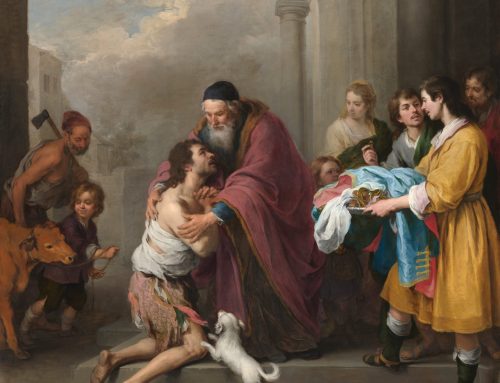
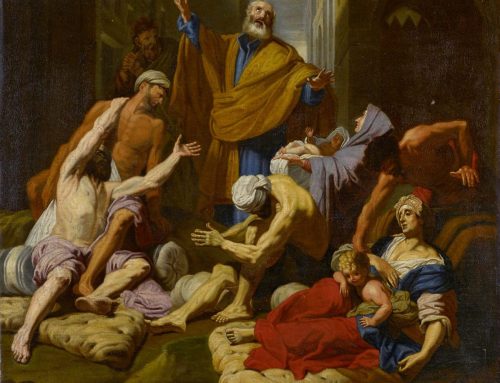
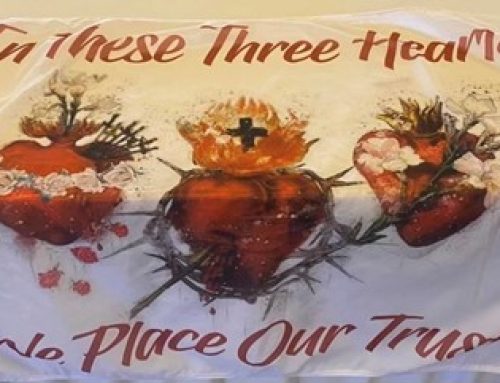
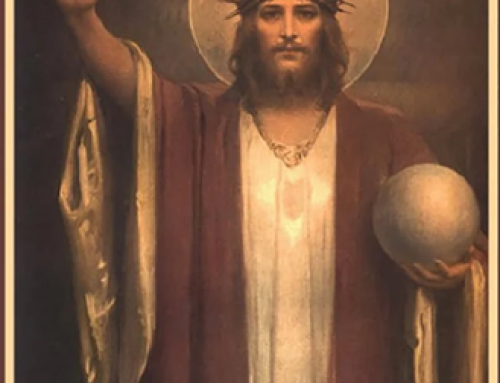
Leave A Comment